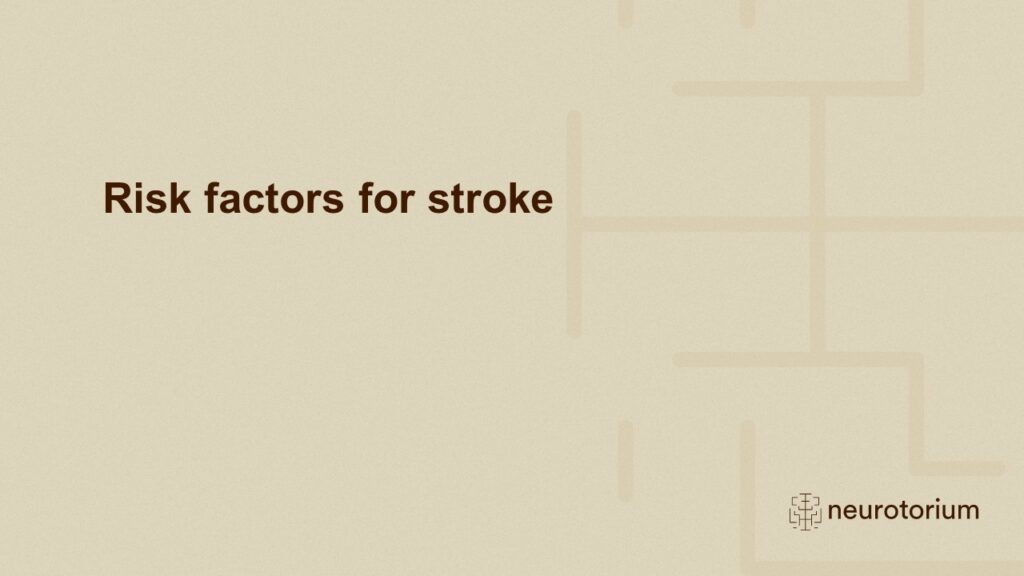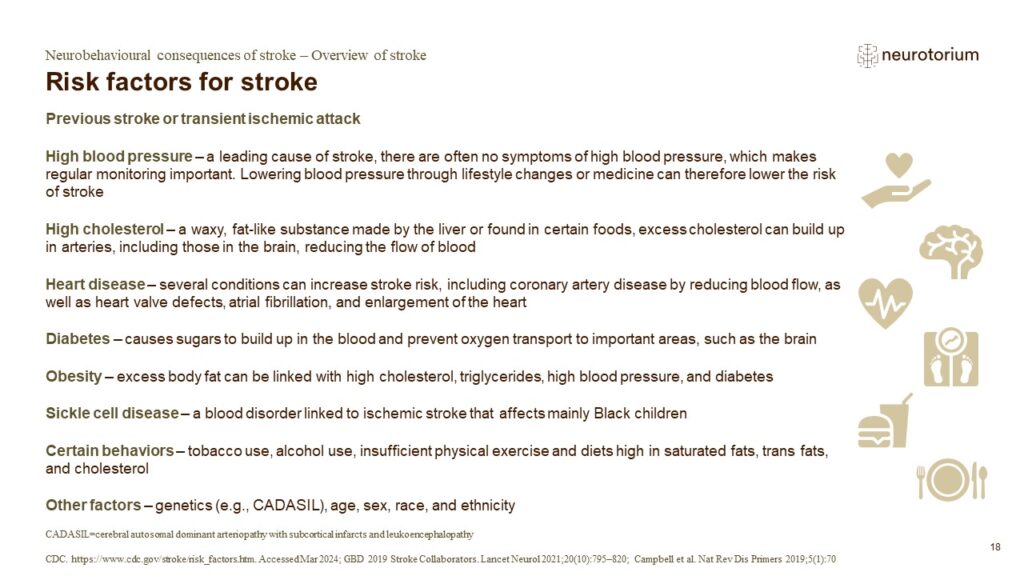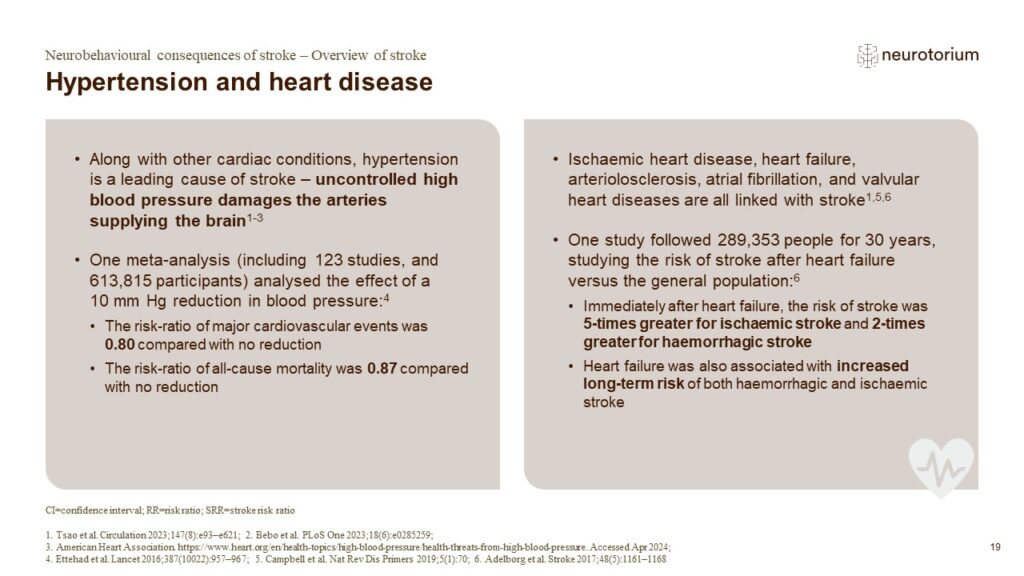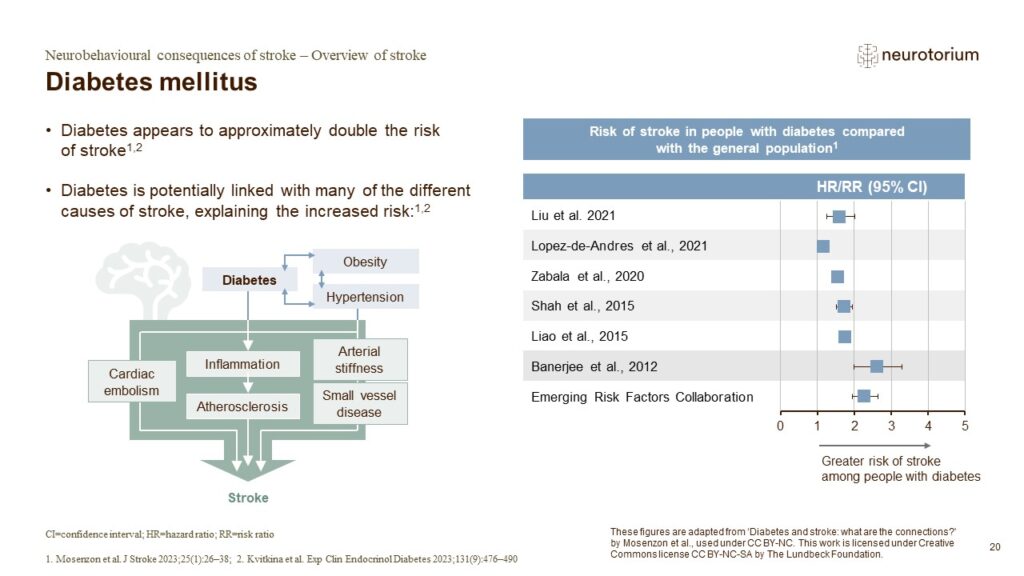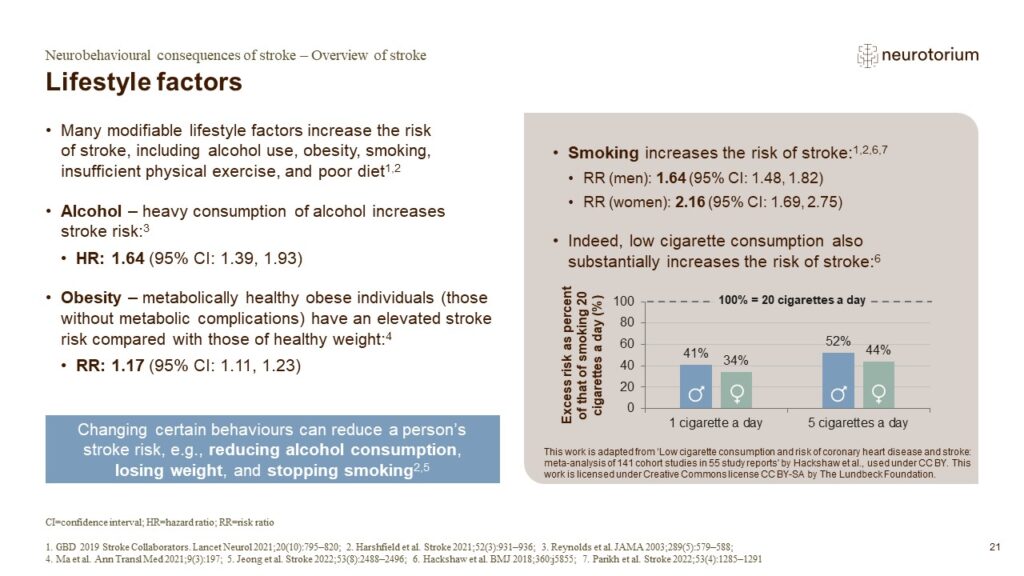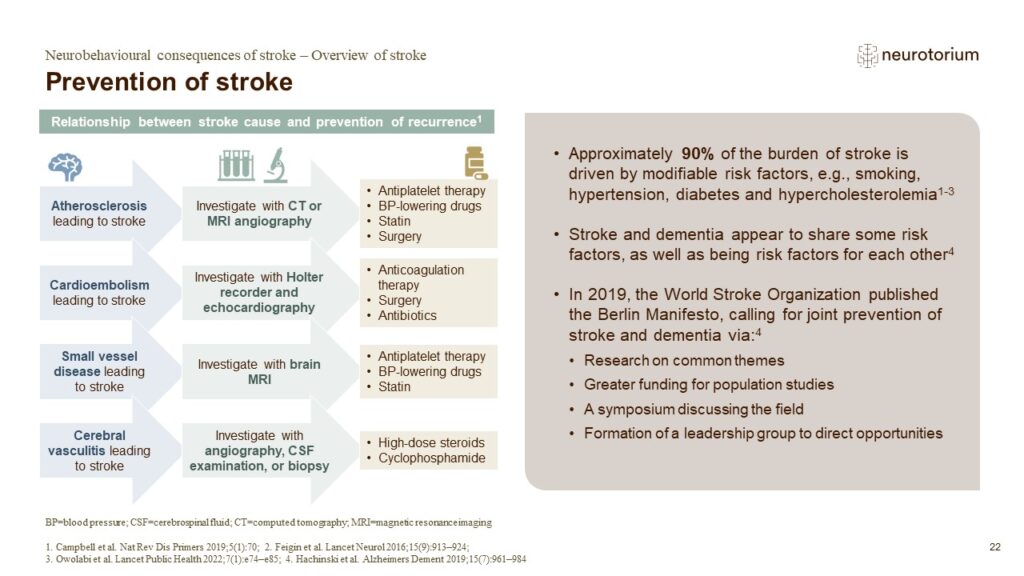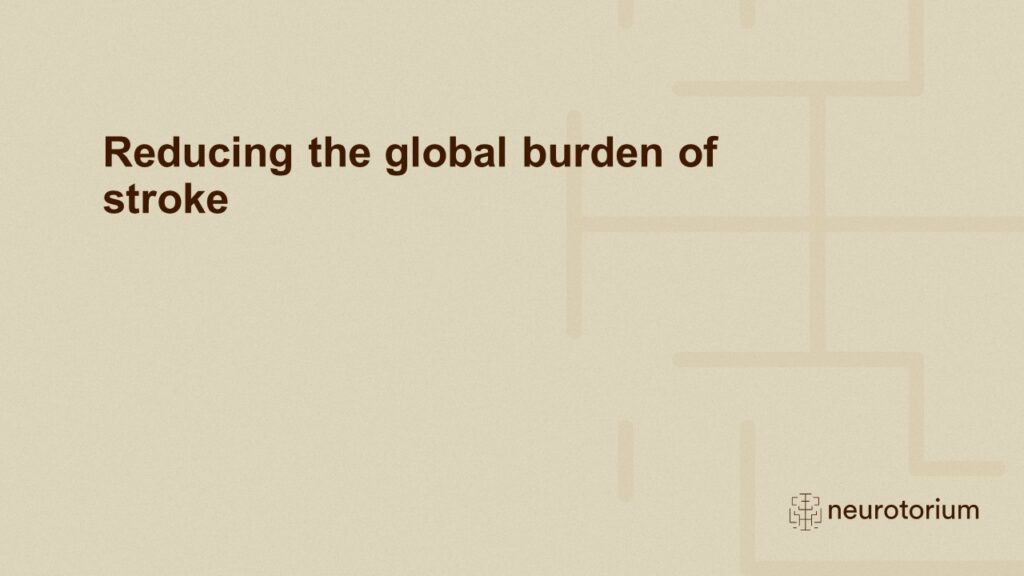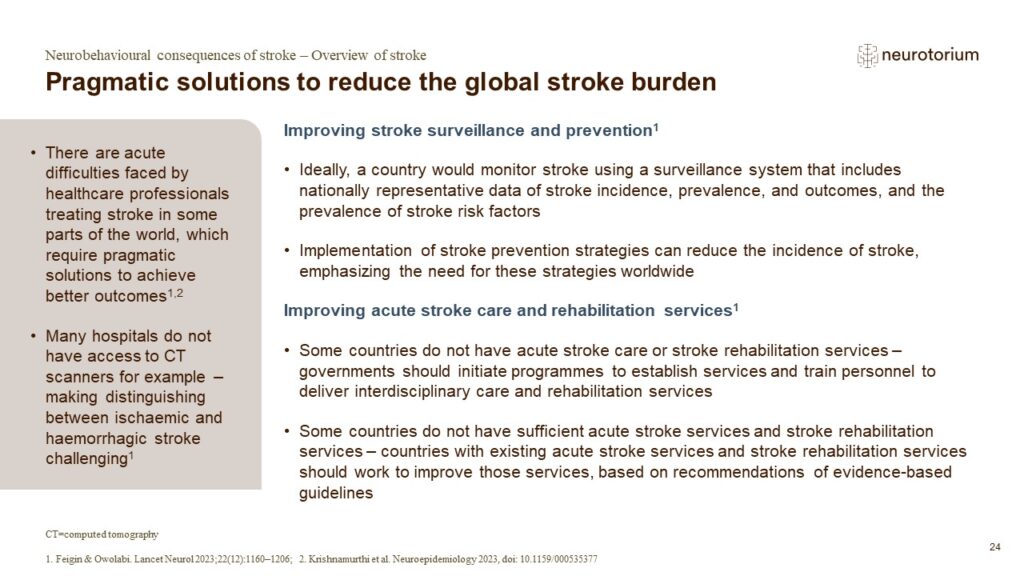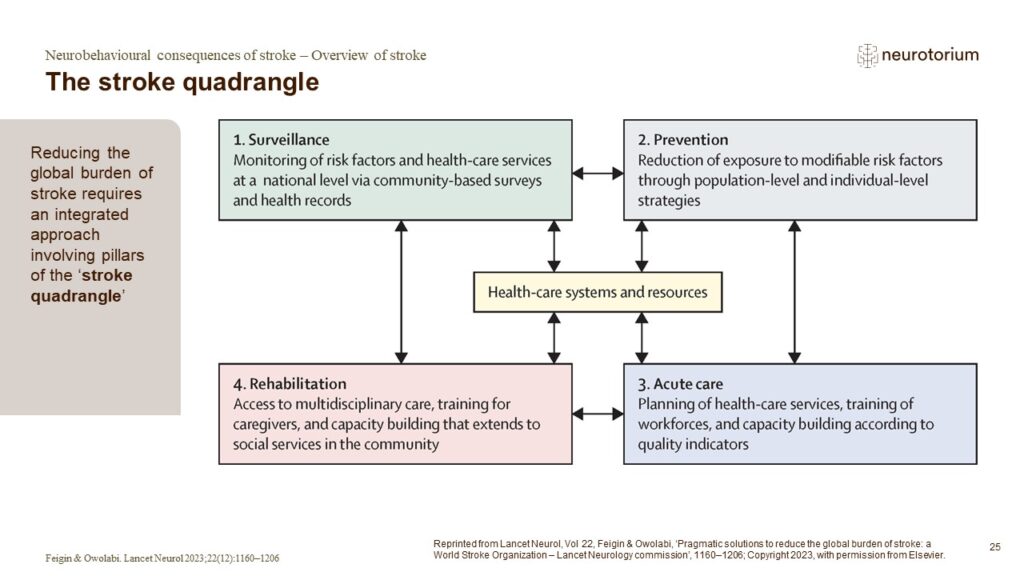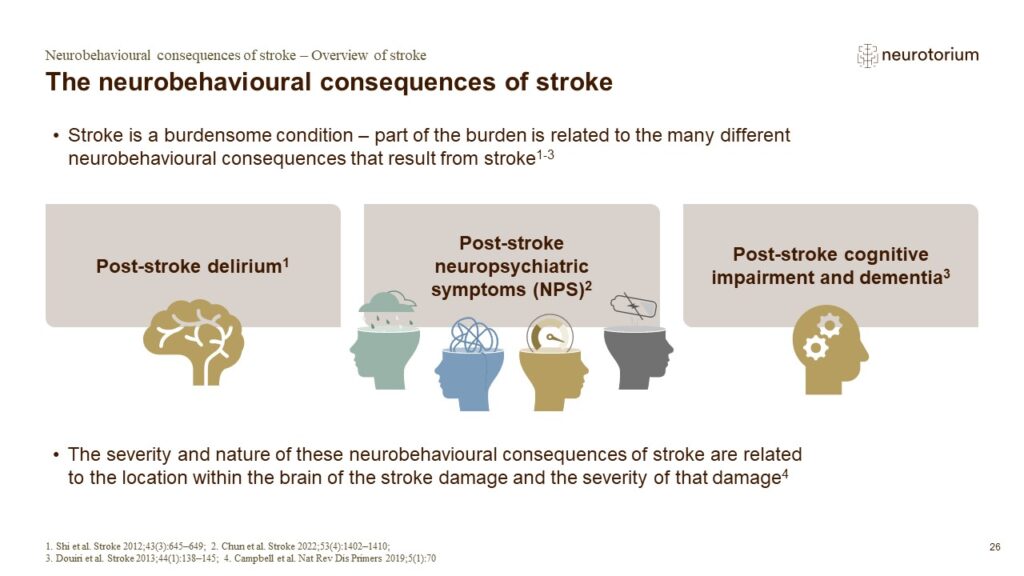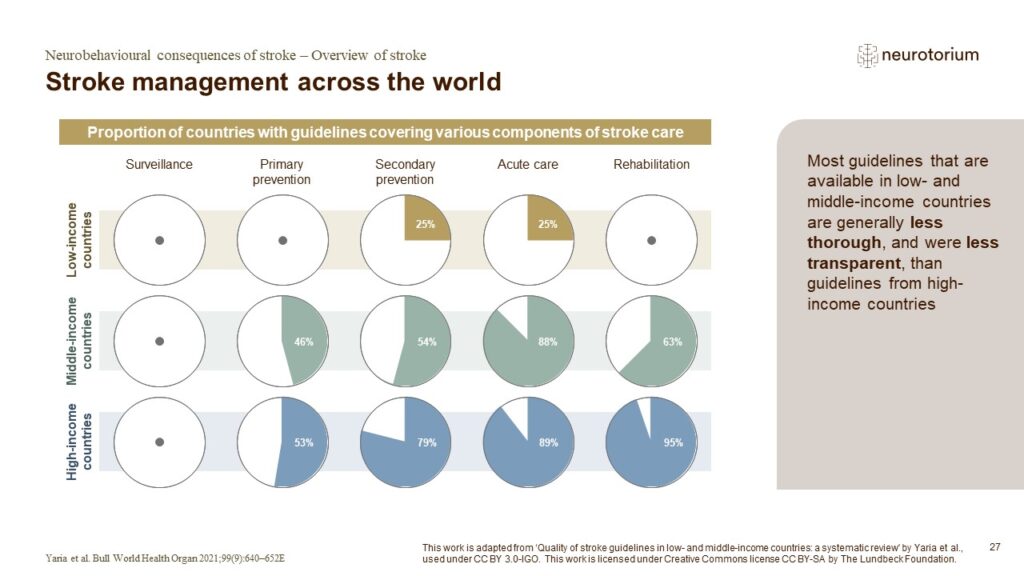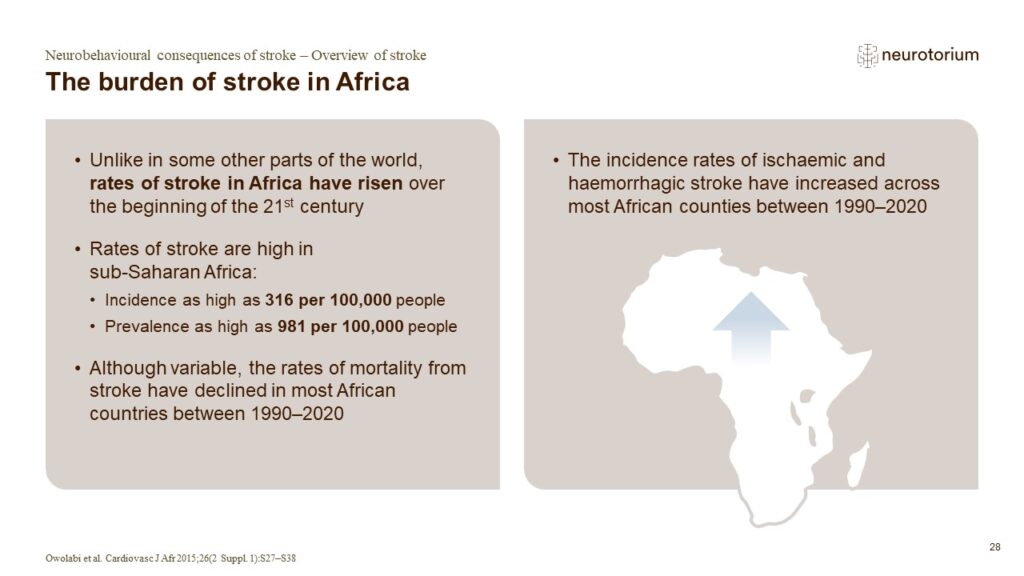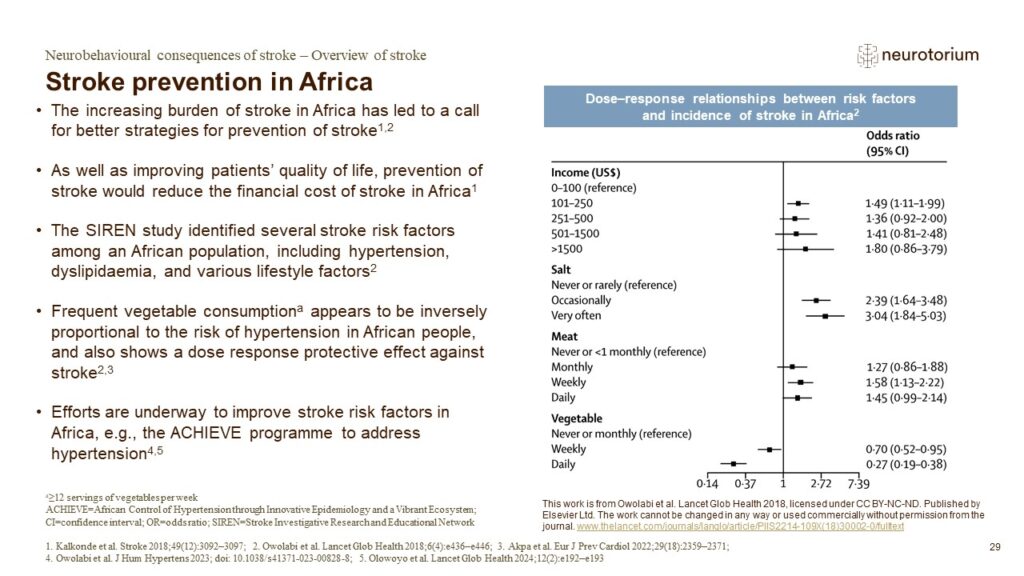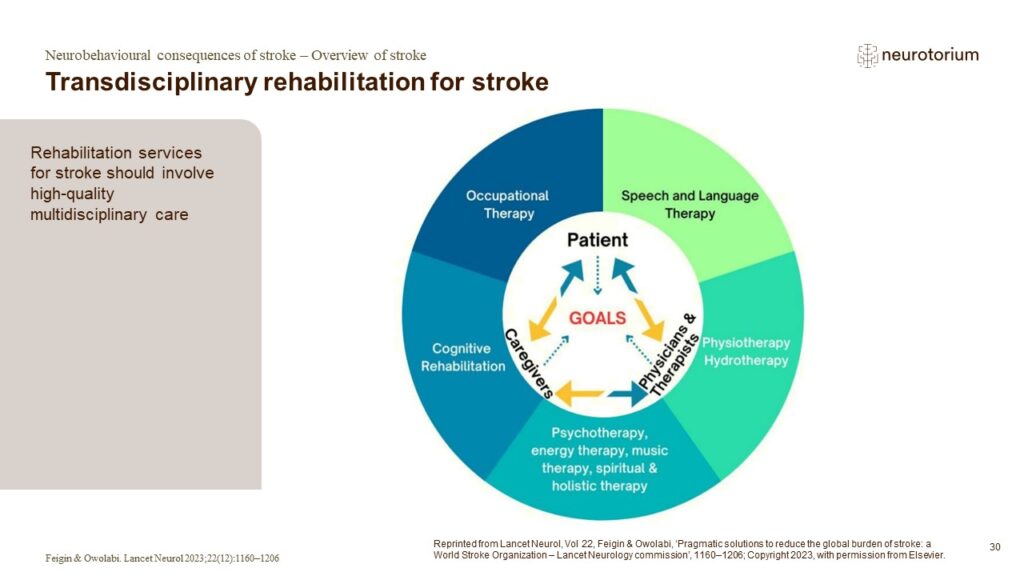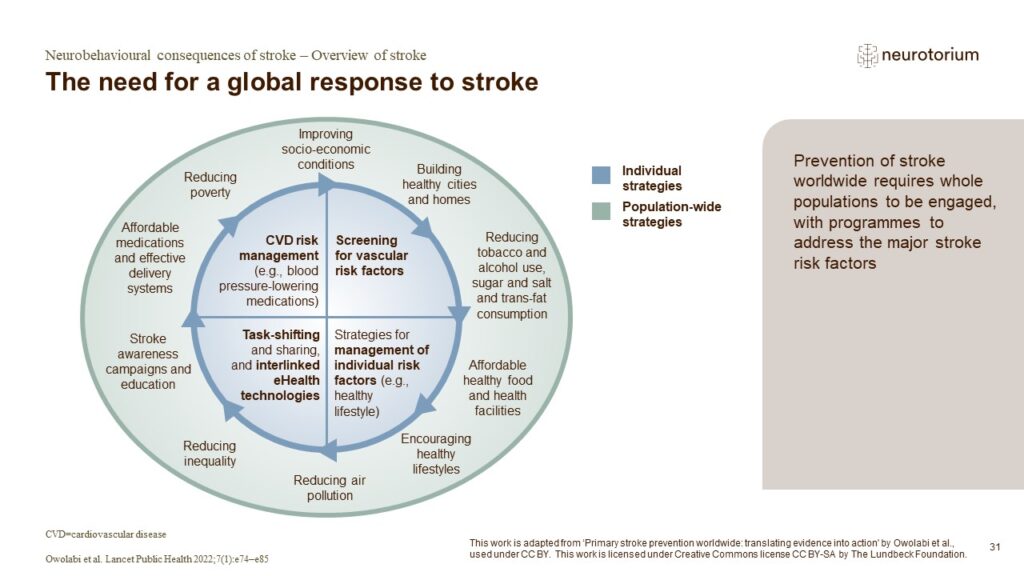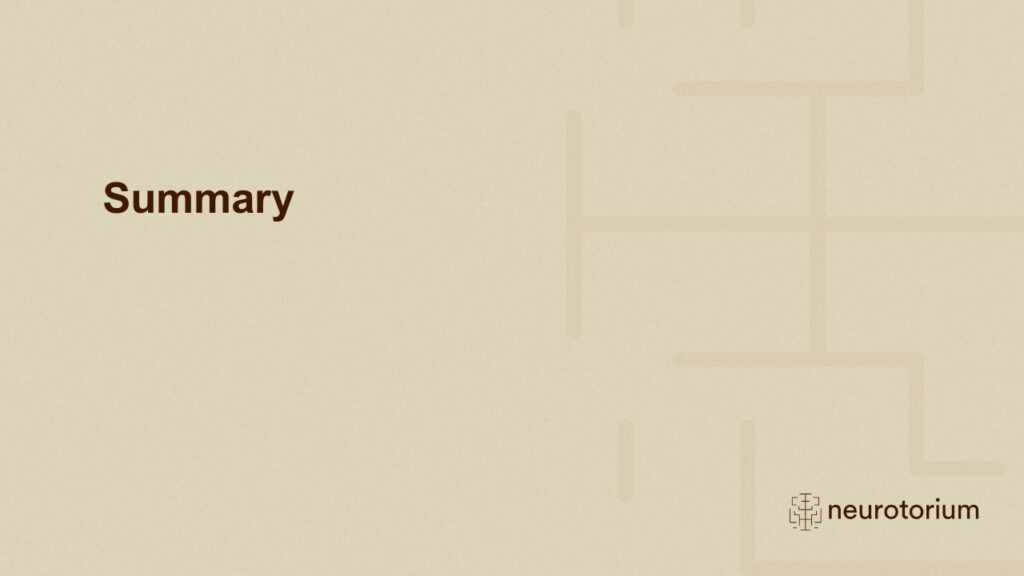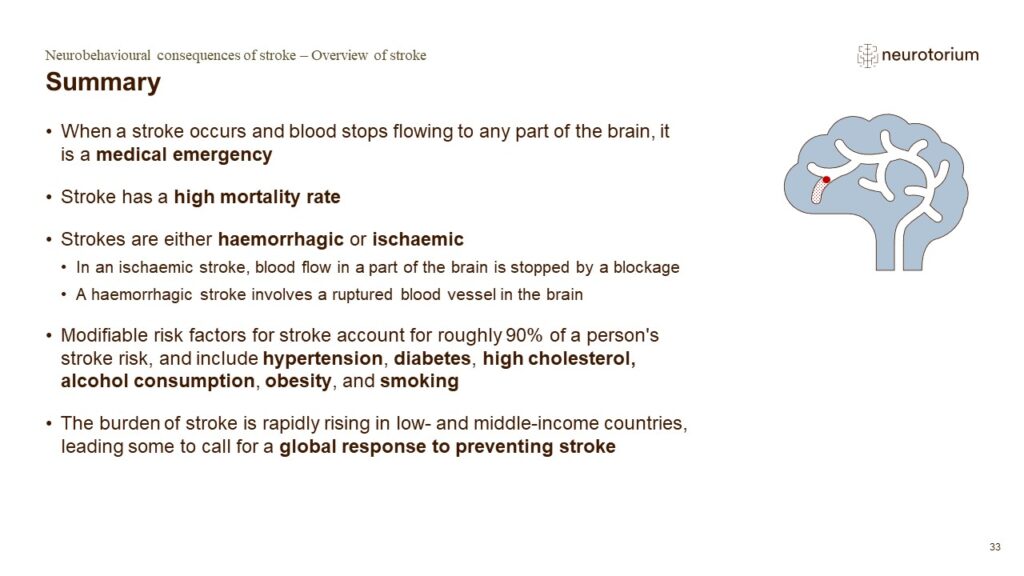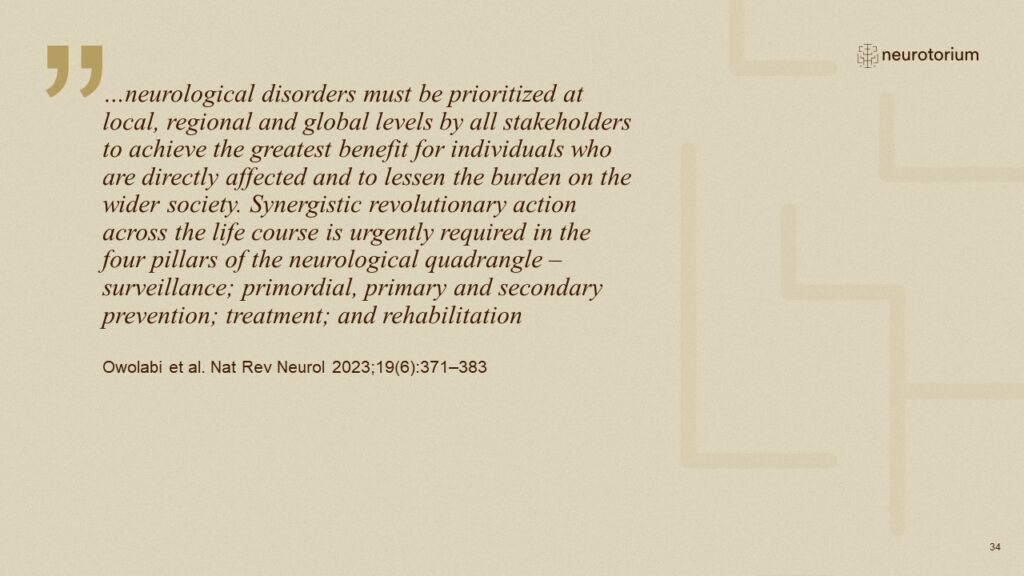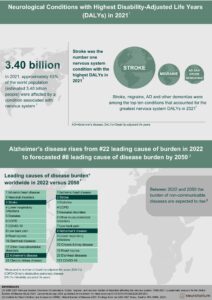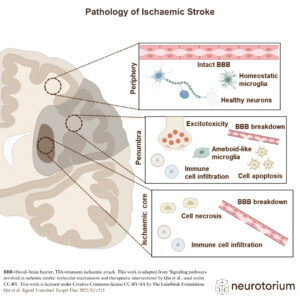Index for
slide deck
Introduction
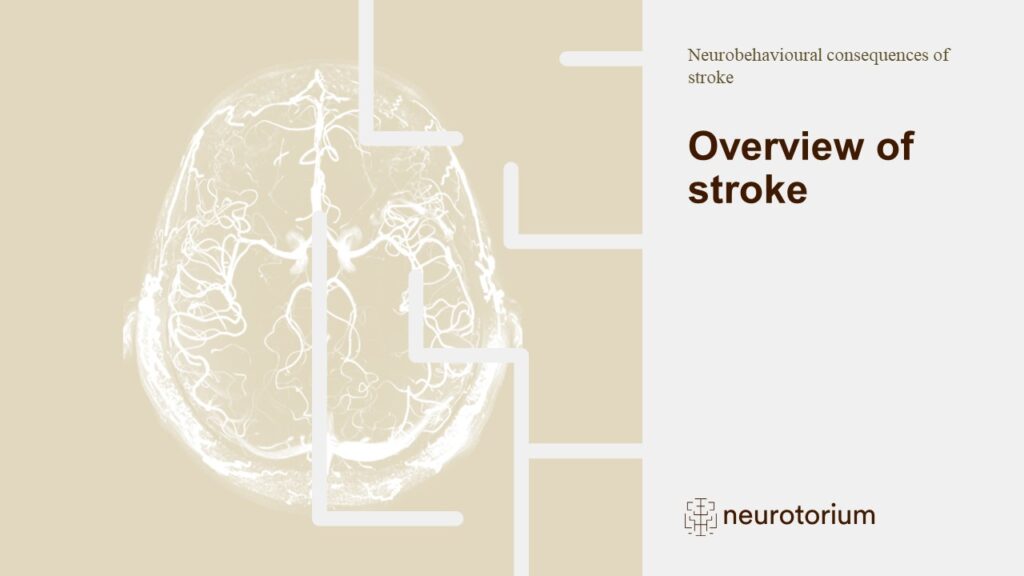
Overview of stroke
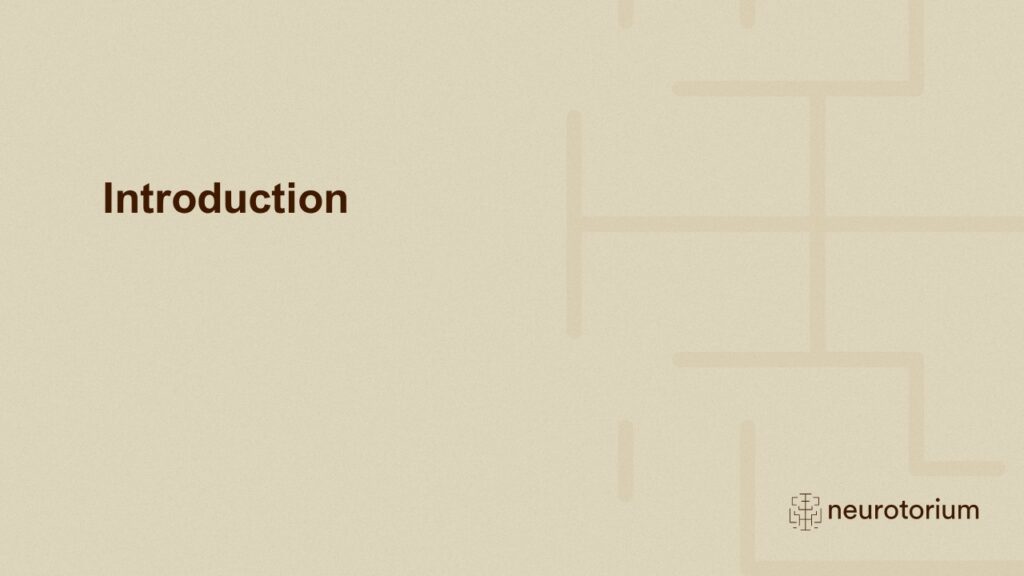
Introduction
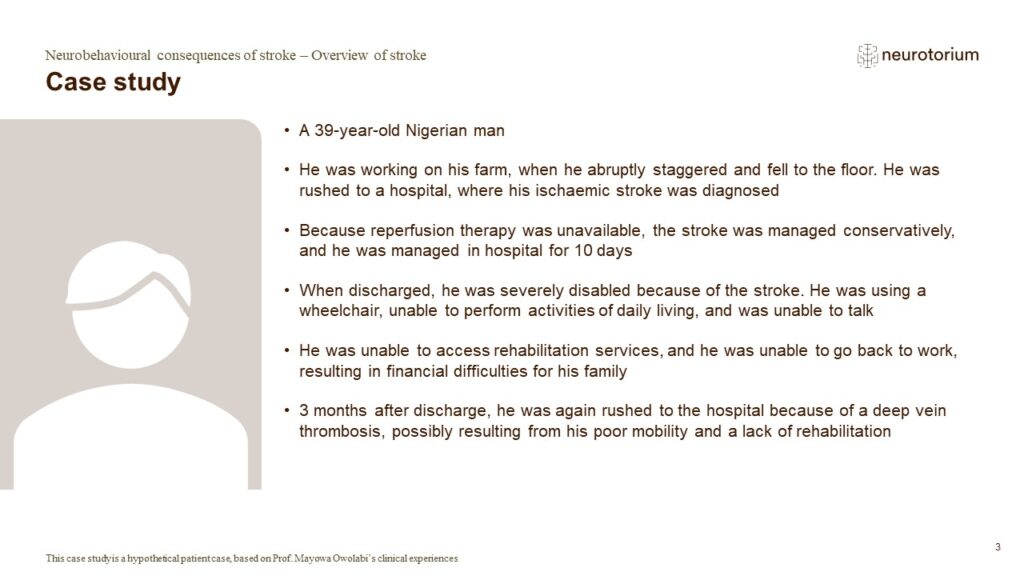
Case study
The slide details a case study with a hypothetical patient case, based on Prof. Mayowa Owolabi’s clinical experiences.
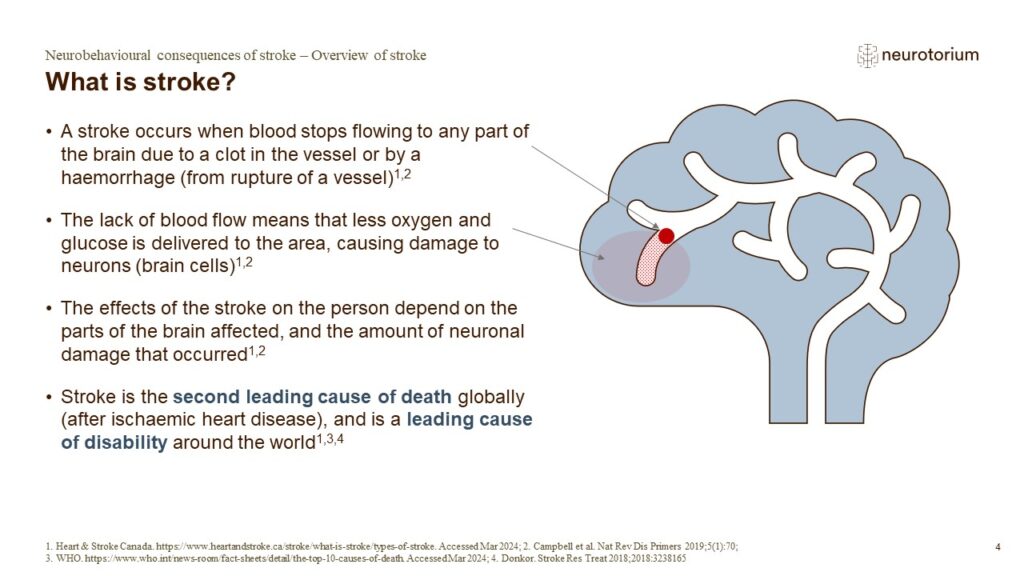
What is stroke?
Stroke is a medical emergency, requiring immediate medical attention.1-4
References:
1. Heart and Stroke Foundation of Canada. Available at: https://www.heartandstroke.ca/stroke/what-is-stroke/types-of-stroke. Accessed March 2024.
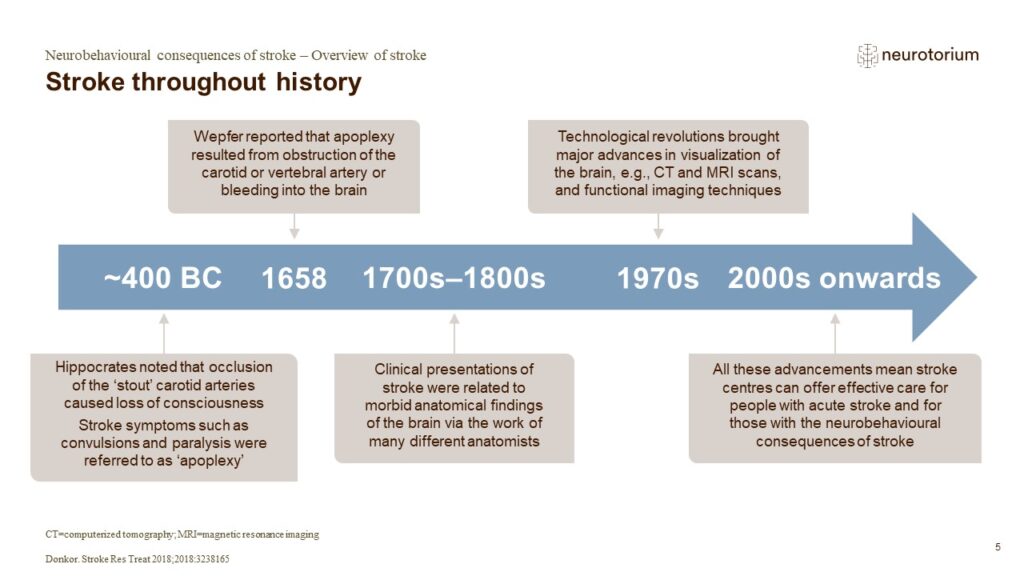
Stroke throughout history
Stroke has been viewed in many different ways over the course of human history.1
Reference:
Epidemiology of stroke
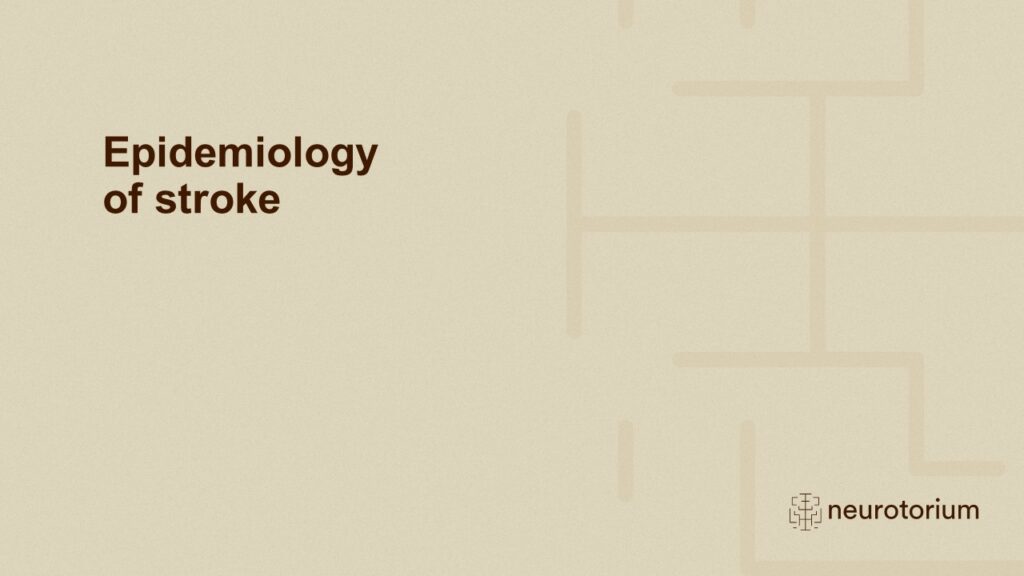
Epidemiology of stroke
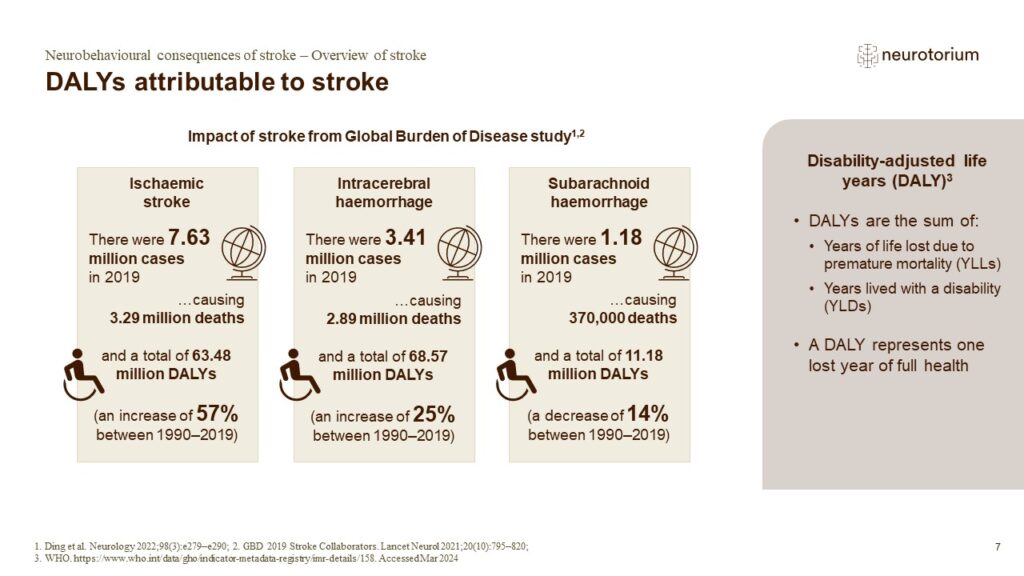
DALYs attributable to stroke
Stroke is a highly prevalent disease worldwide, and has a considerable burden on quality of life as measured by disability-adjusted life years (DALYs).1,2 DALYs are calculated by summing the number of years lost due to premature mortality, and the number of years lived wi…
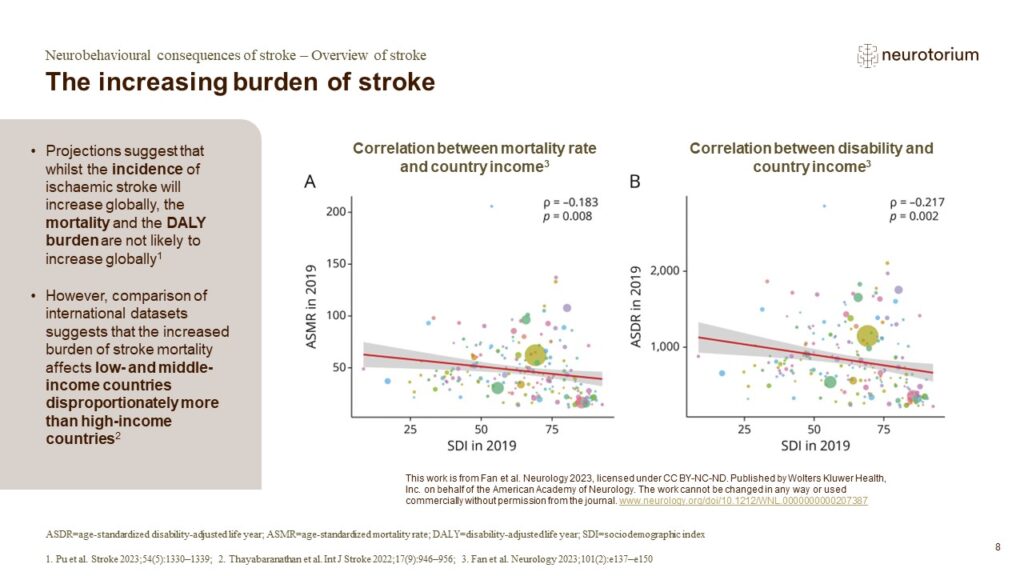
The increasing burden of stroke
Across the world, incidence rates of stroke are predicted to increase in the coming years, with the fastest increase in incidence predicted to occur in Cyprus, Palestine, and South Africa.1,3 The data are a call to action for policymakers to redouble their efforts to impl…
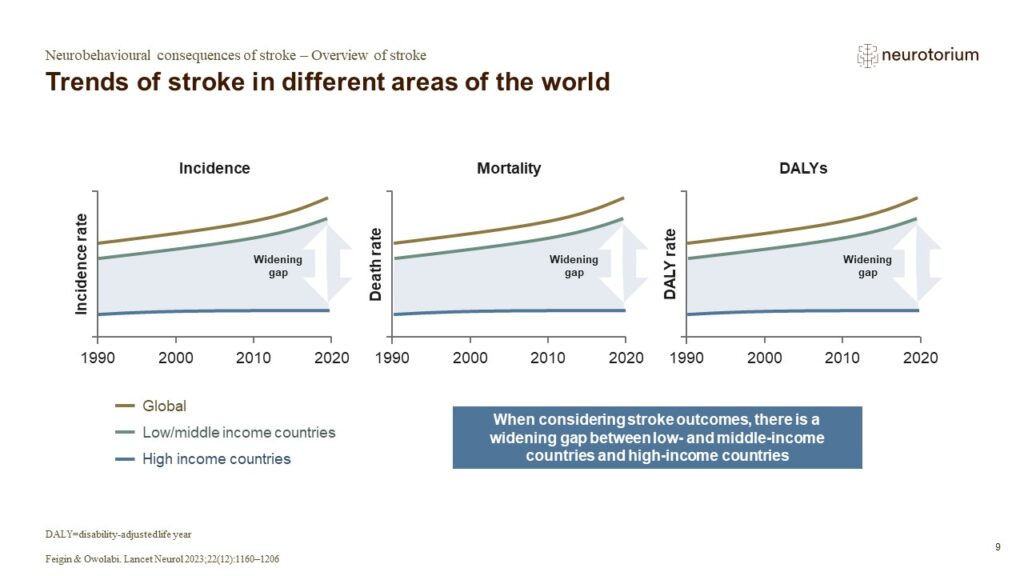
Trends of stroke in different areas of the world
As outlined on the slide, global trends of stroke outcomes, including incidence, mortality, and disability, have increased over the past decades.1 However, because of disparities between low- and middle- income countries and high-income countries, the burden of these incr…
Types of stroke
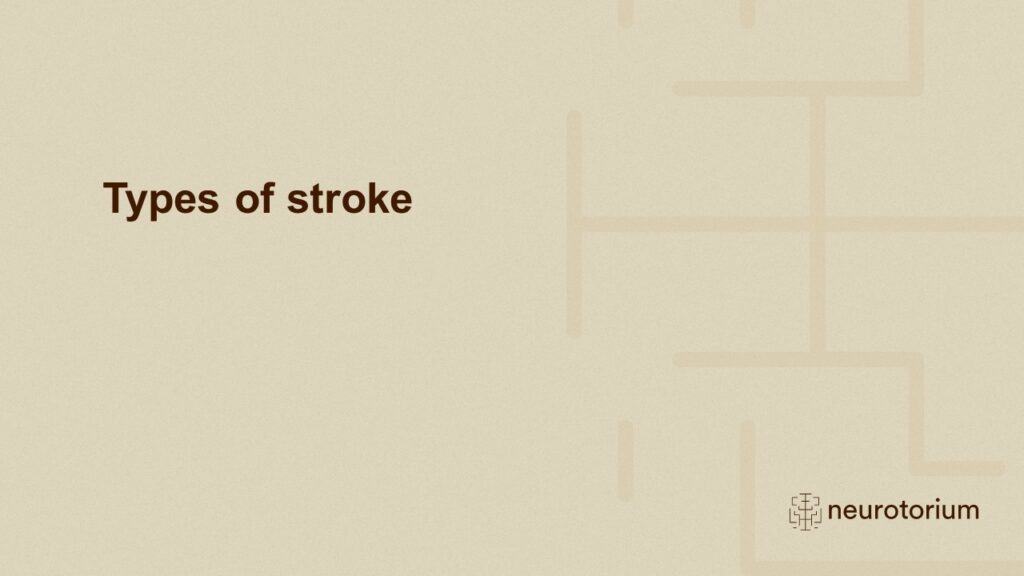
Types of stroke
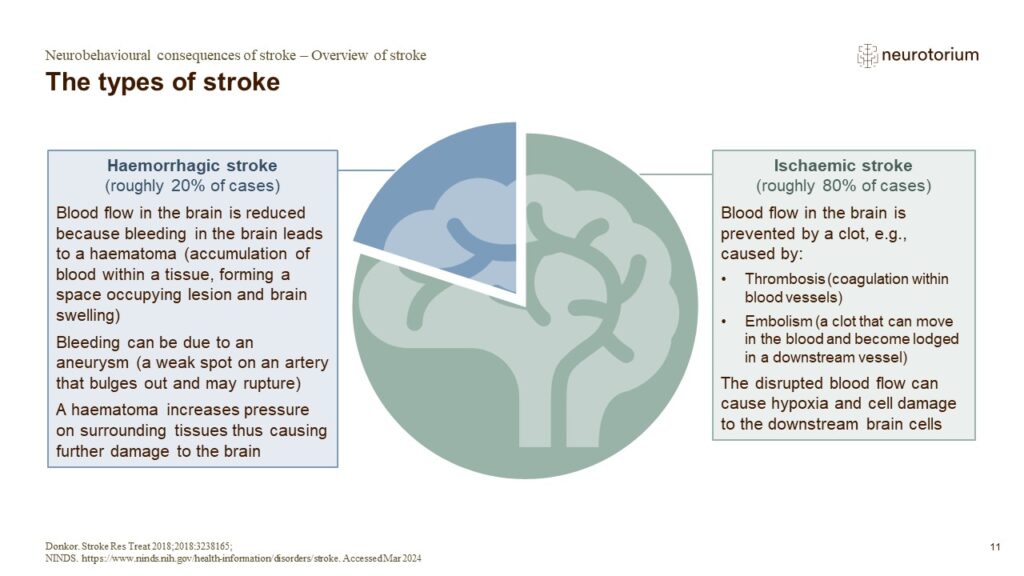
The types of stroke
Strokes are categorized as either haemorrhagic or ischaemic (sometimes referred to as cerebral infarction).1 Although prevalence rates vary, roughly 80% of strokes are ischaemic and the remaining 20% are haemorrhagic.1,2 However, data from low- and middle-income countries…
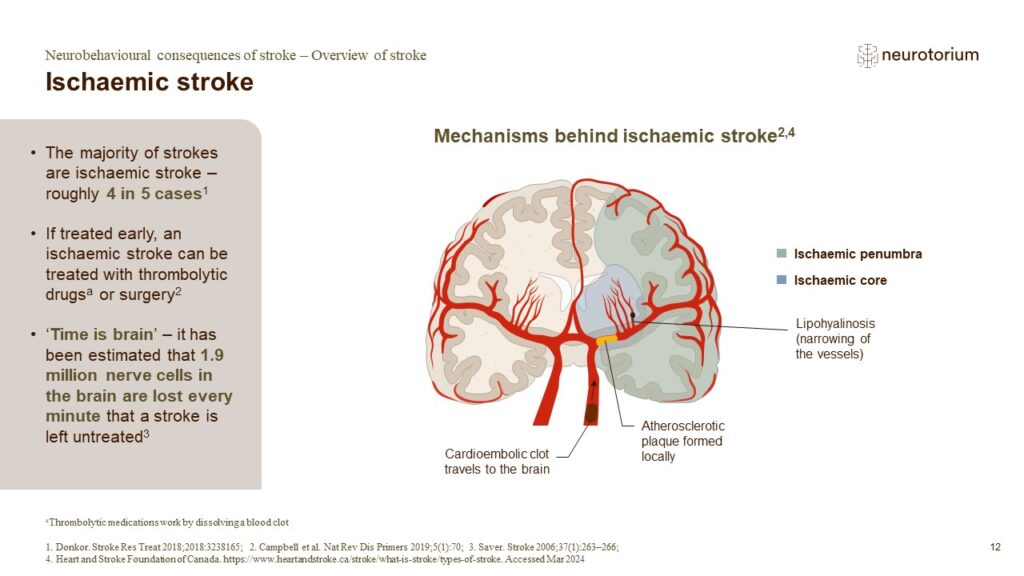
Ischaemic stroke
Although prevalence rates vary, and may be different in different geographies, roughly 80% of strokes are ischaemic.1,5 The pathology of stroke is complex, often involving many different interrelated arterial and cardiac conditions.2 Identification of the cause of a strok…
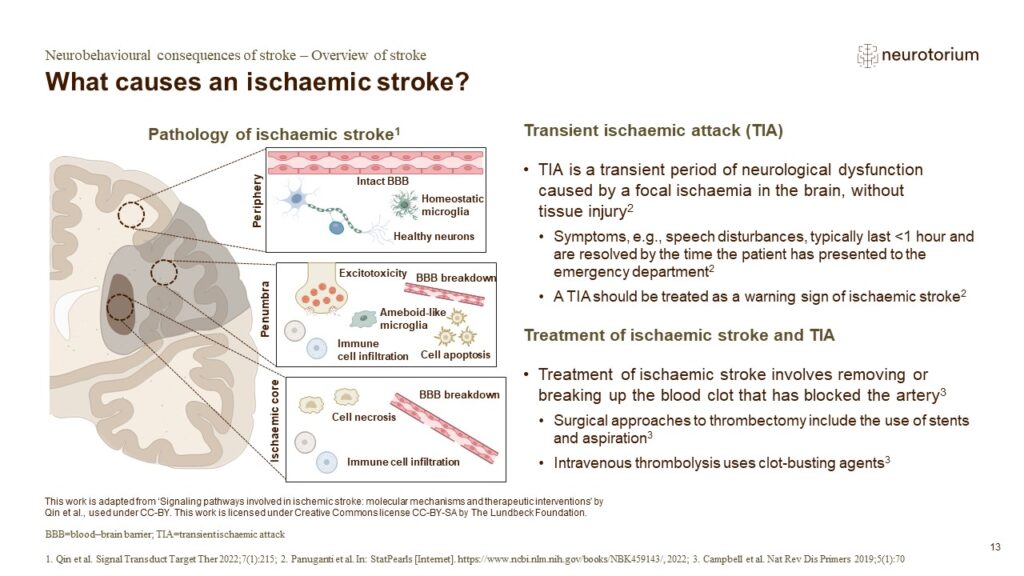
What causes an ischaemic stroke?
The pathology of ischaemic stroke is complex, but commonly involves the formation of a clot that travels in the blood to or within the brain and becomes lodged in the blood vessels of the brain (a thromboembolism), which can reduce or block blood flow (an occlusion).1-3 T…
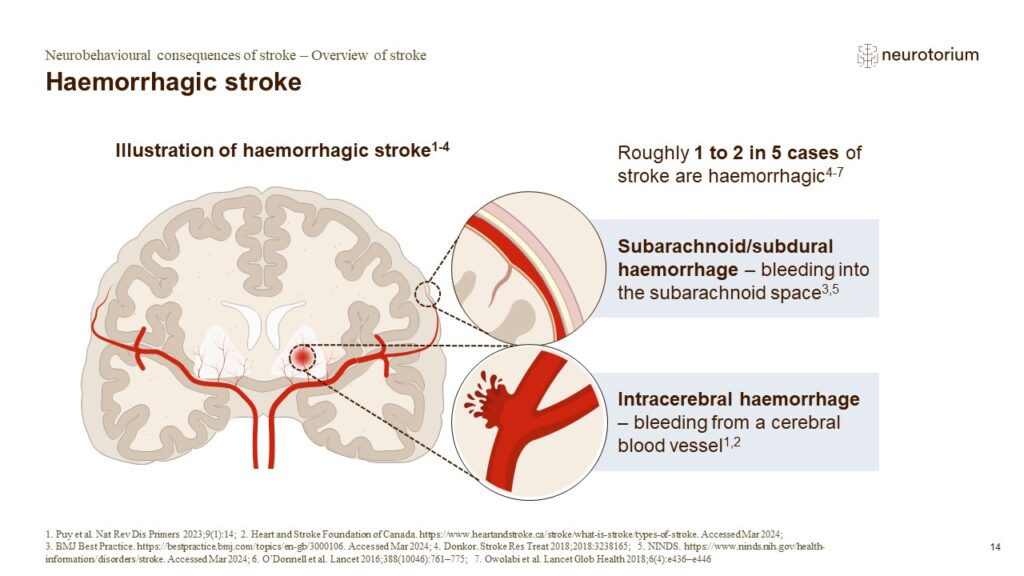
Haemorrhagic stroke
Unlike ischaemic stroke, there are no specific treatments for haemorrhagic stroke, which is most commonly caused by an intracerebral haemorrhage.1 Diagnosis should be performed using computed tomography (CT) head scan, which can confirm the bleeding.3,8 Mortality rates in…
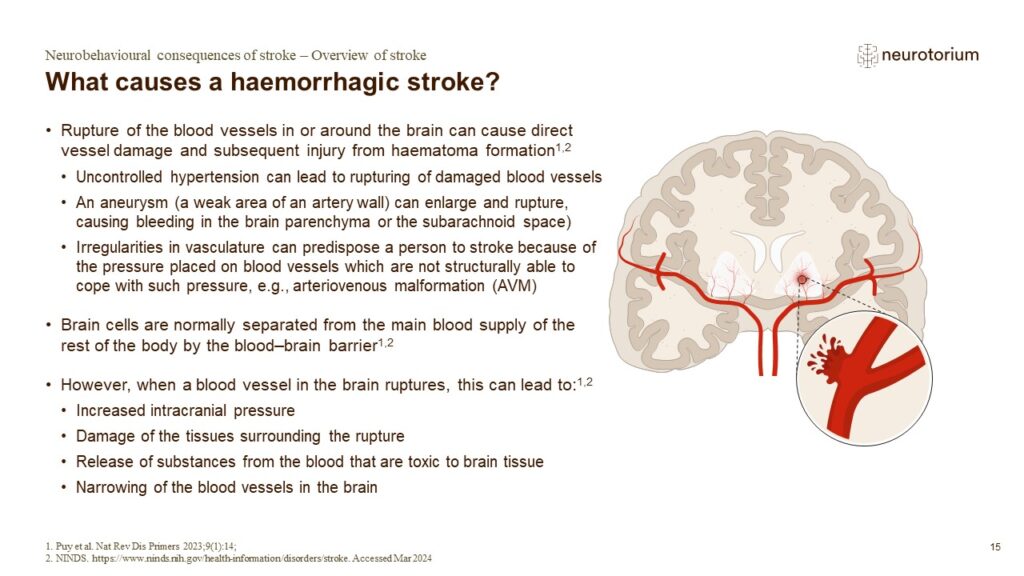
What causes a haemorrhagic stroke?
Haemorrhagic strokes are most commonly caused by an intracerebral haemorrhage, whereby the rupturing will likely be predated by many years of hypertension, but can also be caused by subarachnoid/subdural or intraventricular haemorrhage.2 Whilst the different causes of ble…
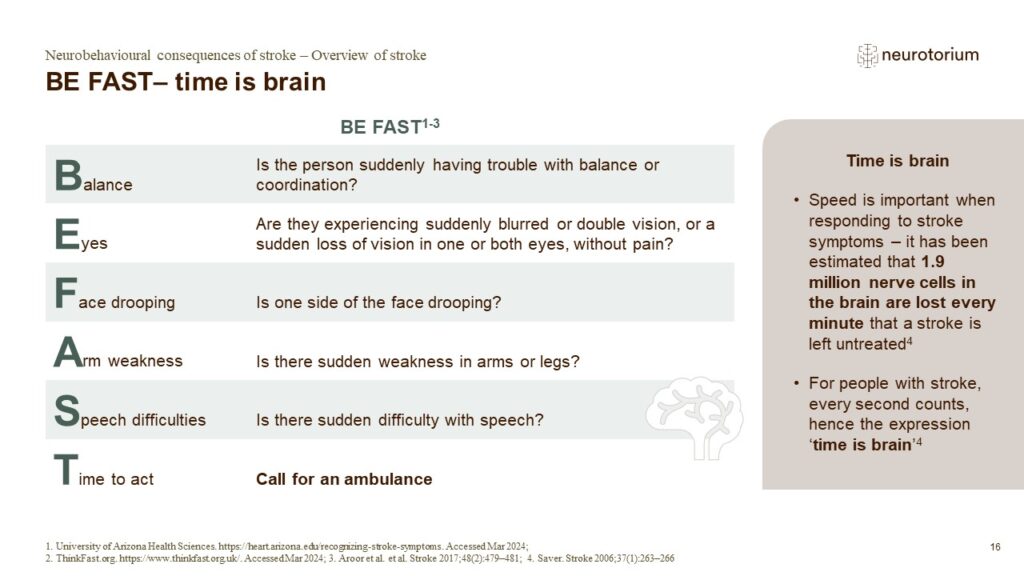
BE FAST– time is brain
BE FAST is an acronym developed to help people identify the three most common symptoms of stroke – drooping face, arm weakness, and speech difficulties.2,5 Other additional signs of stroke include vision changes, headaches, numbness, and problems with balance.5 When these…


